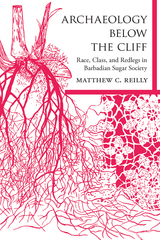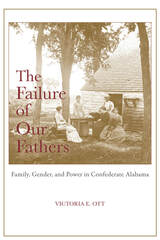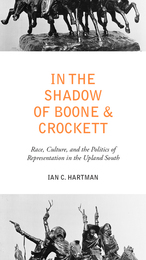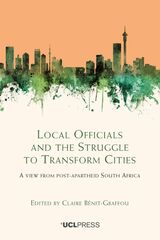3 books about Poor white people

Archaeology below the Cliff
Race, Class, and Redlegs in Barbadian Sugar Society
Matthew C. Reilly
University of Alabama Press, 2019
First book-length archaeological study of a nonelite white population on a Caribbean plantation
Archaeology below the Cliff: Race, Class, and Redlegs in Barbadian Sugar Society is the first archaeological study of the poor whites of Barbados, the descendants of seventeenth-century European indentured servants and small farmers. “Redlegs” is a pejorative to describe the marginalized group who remained after the island transitioned to a sugar monoculture economy dependent on the labor of enslaved Africans. A sizable portion of the “white” minority, the Redlegs largely existed on the peripheries of the plantation landscape in an area called “Below Cliff,” which was deemed unsuitable for profitable agricultural production. Just as the land on which they resided was cast as marginal, so too have the poor whites historically and contemporarily been derided as peripheral and isolated as well as idle, alcoholic, degenerate, inbred, and irrelevant to a functional island society and economy.
Using archaeological, historical, and oral sources, Matthew C. Reilly shows how the precarious existence of the Barbadian Redlegs challenged elite hypercapitalistic notions of economics, race, and class as they were developing in colonial society. Experiencing pronounced economic hardship, similar to that of the enslaved, albeit under very different circumstances, Barbadian Redlegs developed strategies to live in a harsh environment. Reilly’s investigations reveal that what developed in Below Cliff was a moral economy, based on community needs rather than free-market prices.
Reilly extensively excavated households from the tenantry area on the boundaries of the Clifton Hall Plantation, which was abandoned in the 1960s, to explore the daily lives of poor white tenants and investigate their relationships with island economic processes and networks. Despite misconceptions of strict racial isolation, evidence also highlights the importance of poor white encounters and relationships with Afro-Barbadians. Historical data are also incorporated to address how an underrepresented demographic experienced the plantation landscape. Ultimately, Reilly’s narrative situates the Redlegs within island history, privileging inclusion and embeddedness over exclusion and isolation.
Archaeology below the Cliff: Race, Class, and Redlegs in Barbadian Sugar Society is the first archaeological study of the poor whites of Barbados, the descendants of seventeenth-century European indentured servants and small farmers. “Redlegs” is a pejorative to describe the marginalized group who remained after the island transitioned to a sugar monoculture economy dependent on the labor of enslaved Africans. A sizable portion of the “white” minority, the Redlegs largely existed on the peripheries of the plantation landscape in an area called “Below Cliff,” which was deemed unsuitable for profitable agricultural production. Just as the land on which they resided was cast as marginal, so too have the poor whites historically and contemporarily been derided as peripheral and isolated as well as idle, alcoholic, degenerate, inbred, and irrelevant to a functional island society and economy.
Using archaeological, historical, and oral sources, Matthew C. Reilly shows how the precarious existence of the Barbadian Redlegs challenged elite hypercapitalistic notions of economics, race, and class as they were developing in colonial society. Experiencing pronounced economic hardship, similar to that of the enslaved, albeit under very different circumstances, Barbadian Redlegs developed strategies to live in a harsh environment. Reilly’s investigations reveal that what developed in Below Cliff was a moral economy, based on community needs rather than free-market prices.
Reilly extensively excavated households from the tenantry area on the boundaries of the Clifton Hall Plantation, which was abandoned in the 1960s, to explore the daily lives of poor white tenants and investigate their relationships with island economic processes and networks. Despite misconceptions of strict racial isolation, evidence also highlights the importance of poor white encounters and relationships with Afro-Barbadians. Historical data are also incorporated to address how an underrepresented demographic experienced the plantation landscape. Ultimately, Reilly’s narrative situates the Redlegs within island history, privileging inclusion and embeddedness over exclusion and isolation.
[more]

The Failure of Our Fathers
Family, Gender, and Power in Confederate Alabama
Victoria E. Ott
University of Alabama Press, 2023
An in-depth study of non-elite white families in Alabama—from the state’s creation through the end of the Civil War
The Failure of Our Fathers: Family, Gender, and Power in Confederate Alabama examines the evolving position of non-elite white families in Alabama during one of the most pivotal epochs in the state’s history. Drawing on a wide range of personal and public documents reflecting the state’s varied regions and economies, Victoria E. Ott uses gender and family as a lens to examine the yeomanry and poor whites, a constituency that she collectively defines as “common whites,” who identified with the Confederate cause.
Ott provides a nuanced examination of how these Alabamians fit within the antebellum era’s paternalistic social order, eventually identifying with and supporting the Confederate mission to leave the Union and create an independent, slaveholding state. But as the reality of the war slowly set in and the Confederacy began to fray, the increasing dangers families faced led Alabama’s common white men and women to find new avenues to power as a distinct socioeconomic class.
Ott argues that family provided the conceptual framework necessary to understand why common whites supported a war to protect slavery despite having little or no investment in the institution. Going to war meant protecting their families from outsiders who threatened to turn their worlds upside down. Despite class differences, common whites envisioned the Confederacy as a larger family and the state as paternal figures who promised to protect its loyal dependents throughout the conflict. Yet, as the war ravaged many Alabama communities, devotion to the Confederacy seemed less a priority as families faced continued separations, threats of death, and the potential for starvation. The construct of a familial structure that once created a sense of loyalty to the Confederacy now gave them cause to question its leadership. Ott shows how these domestic values rooted in highly gendered concepts ultimately redefined Alabama’s social structure and increased class distinctions after the war.
The Failure of Our Fathers: Family, Gender, and Power in Confederate Alabama examines the evolving position of non-elite white families in Alabama during one of the most pivotal epochs in the state’s history. Drawing on a wide range of personal and public documents reflecting the state’s varied regions and economies, Victoria E. Ott uses gender and family as a lens to examine the yeomanry and poor whites, a constituency that she collectively defines as “common whites,” who identified with the Confederate cause.
Ott provides a nuanced examination of how these Alabamians fit within the antebellum era’s paternalistic social order, eventually identifying with and supporting the Confederate mission to leave the Union and create an independent, slaveholding state. But as the reality of the war slowly set in and the Confederacy began to fray, the increasing dangers families faced led Alabama’s common white men and women to find new avenues to power as a distinct socioeconomic class.
Ott argues that family provided the conceptual framework necessary to understand why common whites supported a war to protect slavery despite having little or no investment in the institution. Going to war meant protecting their families from outsiders who threatened to turn their worlds upside down. Despite class differences, common whites envisioned the Confederacy as a larger family and the state as paternal figures who promised to protect its loyal dependents throughout the conflict. Yet, as the war ravaged many Alabama communities, devotion to the Confederacy seemed less a priority as families faced continued separations, threats of death, and the potential for starvation. The construct of a familial structure that once created a sense of loyalty to the Confederacy now gave them cause to question its leadership. Ott shows how these domestic values rooted in highly gendered concepts ultimately redefined Alabama’s social structure and increased class distinctions after the war.
[more]

In the Shadow of Boone and Crockett
Race, Culture, and the Politics of Representation in the Upland South
Ian C. Hartman
University of Tennessee Press, 2015
“Well-researched and well argued, provocative and imaginative, In the Shadow of Boone and Crockett examines the image of the “pure” Appalachian Anglo-Saxons who furnished hope for the future, and the less flattering image of the degenerate, poverty-stricken mountaineers with blood on their hands. In a wide-ranging exploration that reaches from Teddy Roosevelt to JFK, Ian C. Hartman examines the idea of Appalachian exceptionalism over time and what that has meant for the region and for America.”
—James C. Klotter, state historian of Kentucky and professor of history, Georgetown College
Extending from the southern Appalachians through the rolling hills of Kentucky and Tennessee to the Ozarks of Arkansas and Missouri, the upland South emerged in American lore as the setting where Daniel Boone, David Crockett, and other rugged frontiersmen forged a modern nation and headed west to become the progenitors of what some viewed as a new and superior “American race.” Others, however, saw this region as the breeding ground of poor, debased whites—the “hillbillies” and “white trash” of popular stereotypes. These conflicting identities have long dominated public discourse about the region, as well as fostered a deep fascination with it.
In this compelling study, part political and part cultural history, Ian C. Hartman probes the late-nineteenth-century context from which this paradox arose and the array of personalities, expressions, and policies that sought to resolve it—or at least make sense of it—in the decades that followed. He begins by investigating the writings of “race theorists” including future president Theodore Roosevelt, whose multivolume The Winning of the West (1889–96) furthered the tale of a heroic and distinctly American stock who, “with axe and rifle,” conquered a continent. Hartman relates these myths to the rise of the early-twentieth-century eugenics movement, which sought to regenerate and purify a once proud but now impoverished and degraded people through policies that included forced sterilization to weed out “imbeciles.” Hartman goes on to showcase the surprising ways in which the contradictory identity of the upland South affected broader national debates about imperialism, crime and punishment, poverty and inequality, and the growth and decline of the postwar welfare state.
Whether considering the racial implications of a 1930s Appalachian folk festival, the stereotypical but often sympathetic portrayals of rural southerners in sitcoms like The Beverly Hillbillies and The Andy Griffith Show, or the shifting perceptions of President Lyndon B. Johnson’s War on Poverty, In the Shadow of Boone and Crockett is a consistently provocative book that invites readers to ponder a fresh a set of ideas about America’s “race history” that have shown remarkable traction for more than a century.
Ian C. Hartman is an assistant professor of history at the University of Alaska Anchorage. His articles and reviews have appeared in the Journal of Southern History, Cultural Studies—Critical Methodologies, Appalachian Journal, and Multicultural America: A Multimedia Encyclopedia, among other publications.
—James C. Klotter, state historian of Kentucky and professor of history, Georgetown College
Extending from the southern Appalachians through the rolling hills of Kentucky and Tennessee to the Ozarks of Arkansas and Missouri, the upland South emerged in American lore as the setting where Daniel Boone, David Crockett, and other rugged frontiersmen forged a modern nation and headed west to become the progenitors of what some viewed as a new and superior “American race.” Others, however, saw this region as the breeding ground of poor, debased whites—the “hillbillies” and “white trash” of popular stereotypes. These conflicting identities have long dominated public discourse about the region, as well as fostered a deep fascination with it.
In this compelling study, part political and part cultural history, Ian C. Hartman probes the late-nineteenth-century context from which this paradox arose and the array of personalities, expressions, and policies that sought to resolve it—or at least make sense of it—in the decades that followed. He begins by investigating the writings of “race theorists” including future president Theodore Roosevelt, whose multivolume The Winning of the West (1889–96) furthered the tale of a heroic and distinctly American stock who, “with axe and rifle,” conquered a continent. Hartman relates these myths to the rise of the early-twentieth-century eugenics movement, which sought to regenerate and purify a once proud but now impoverished and degraded people through policies that included forced sterilization to weed out “imbeciles.” Hartman goes on to showcase the surprising ways in which the contradictory identity of the upland South affected broader national debates about imperialism, crime and punishment, poverty and inequality, and the growth and decline of the postwar welfare state.
Whether considering the racial implications of a 1930s Appalachian folk festival, the stereotypical but often sympathetic portrayals of rural southerners in sitcoms like The Beverly Hillbillies and The Andy Griffith Show, or the shifting perceptions of President Lyndon B. Johnson’s War on Poverty, In the Shadow of Boone and Crockett is a consistently provocative book that invites readers to ponder a fresh a set of ideas about America’s “race history” that have shown remarkable traction for more than a century.
Ian C. Hartman is an assistant professor of history at the University of Alaska Anchorage. His articles and reviews have appeared in the Journal of Southern History, Cultural Studies—Critical Methodologies, Appalachian Journal, and Multicultural America: A Multimedia Encyclopedia, among other publications.
[more]
READERS
Browse our collection.
PUBLISHERS
See BiblioVault's publisher services.
STUDENT SERVICES
Files for college accessibility offices.
UChicago Accessibility Resources
home | accessibility | search | about | contact us
BiblioVault ® 2001 - 2024
The University of Chicago Press









